The ocean is filled with incredible creatures, but few are as bizarre and fascinating as the mantis shrimp. Often called “sea locusts” or “thumb splitters,” these marine predators are not shrimp at all, despite their name. They belong to the order Stomatopoda, and represent a truly unique branch on the tree of life. This article delves into the world of mantis shrimp, exploring their biology, behavior, habitat, and their surprising impact on the marine ecosystem—and even human technology.
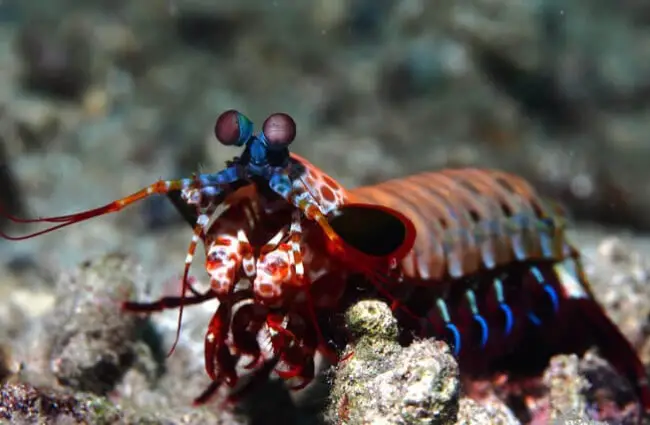
Understanding Mantis Shrimp: An Overview
Mantis shrimp are relatively small, typically ranging from 3 to 12 inches in length, although some species can grow larger. They are found in tropical and subtropical waters around the globe, favoring coral reefs, rocky areas, and sandy bottoms. Their most striking feature is their powerful, raptorial appendages—the “clubs” or “spears” they use to capture prey. These appendages are so fast and forceful that they can break glass, crack open snail shells, and even injure humans if handled carelessly. There are over 450 species of mantis shrimp, divided into two main groups based on their appendage type: spearers and smashers.
Spearers vs. Smashers
Spearers, such as the Lysiosquilla species, possess spear-like appendages with sharp points. They hunt soft-bodied prey such as fish, shrimp, and crabs, impaling them with incredible speed and accuracy. Smashers, such as the peacock mantis shrimp (Odontodactylus scyllarus), have club-like appendages used to deliver devastating blows. They target hard-shelled prey like snails, crabs, and clams, shattering their exoskeletons with immense force.
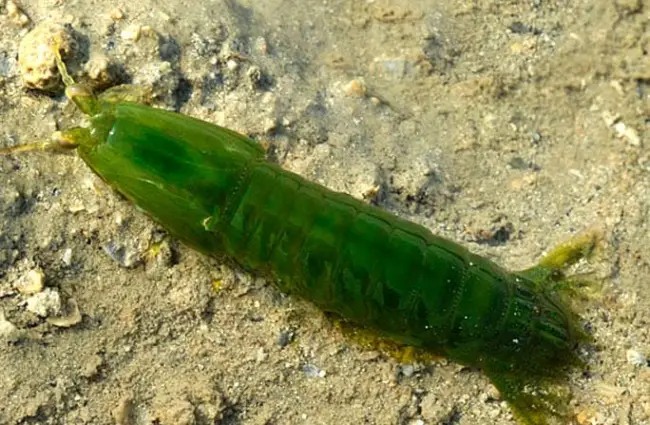
Habitat and Distribution
Mantis shrimp are primarily found in the Indo-Pacific Ocean, although some species inhabit the Atlantic and Caribbean Seas. They prefer warm, shallow waters, particularly coral reefs, where they can find abundant prey and shelter. They are burrowing animals, creating and maintaining elaborate burrows in the substrate, which they use for protection and ambush predation. These burrows are often meticulously maintained, providing a safe haven from predators and a strategic advantage when hunting. They generally avoid open waters and remain close to the seabed.
Diet and Hunting Strategies
Mantis shrimp are opportunistic predators with a varied diet. Their prey includes fish, crabs, shrimp, snails, clams, and even other mantis shrimp. Their hunting strategies are as diverse as their prey. Spearers rely on speed and accuracy, while smashers utilize brute force. Some species are ambush predators, lying in wait within their burrows, while others actively pursue their prey. Their powerful appendages are not just used for capturing prey; they also use them for defense against predators and for territorial disputes.
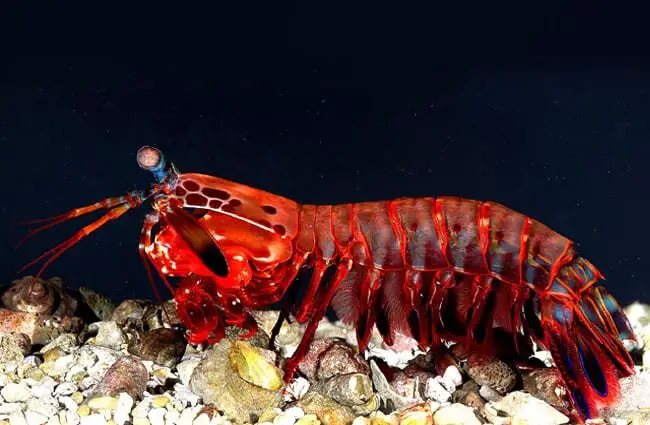
Reproduction and Life Cycle
Mantis shrimp have a complex reproductive cycle. They have separate sexes; males and females. During mating, the male deposits a spermatophore—a packet of sperm—onto the female’s underside. The female then fertilizes her eggs, which she carries for several weeks before hatching. The larvae undergo several stages of development, eventually metamorphosing into miniature versions of the adults.
Lifespan
The lifespan of a mantis shrimp varies depending on the species, but most live for around 3 to 6 years in the wild. Growth occurs through molting, where they shed their exoskeleton and develop a new, larger one. Molting is a vulnerable process, as the shrimp are soft and defenseless until their new exoskeleton hardens.
Ecological Role and Interactions
Mantis shrimp play a crucial role in maintaining the health and balance of coral reef ecosystems. As apex predators, they help control populations of smaller invertebrates, preventing any single species from dominating the reef. They also contribute to nutrient cycling by breaking down prey and releasing nutrients into the water. Their burrows provide shelter for other reef inhabitants, creating microhabitats that enhance biodiversity. They are preyed upon by larger fish, sharks, and sea turtles, forming an important link in the marine food web.

The Amazing Eyesight of Mantis Shrimp
Perhaps the most remarkable feature of mantis shrimp is their eyes. They possess the most complex visual system known in the animal kingdom. Unlike humans, who have three types of photoreceptor cells, mantis shrimp have 12 to 16. This allows them to see a wider range of colors, including ultraviolet and polarized light. They can also detect circularly polarized light, a phenomenon invisible to humans. Their eyes can move independently, giving them a nearly full 360-degree view of their surroundings.
Mantis Shrimp and Humans
Mantis shrimp are sometimes consumed as food in Southeast Asia and parts of the Pacific. Their meat is considered a delicacy, but it can be difficult to harvest due to their aggressive nature and powerful claws. In recent years, scientists have been studying the structure of their dactyl clubs to inspire the development of new materials and technologies. The layered structure of their clubs is incredibly strong and impact-resistant, and could be used to create stronger body armor, vehicle components, and even sporting equipment.
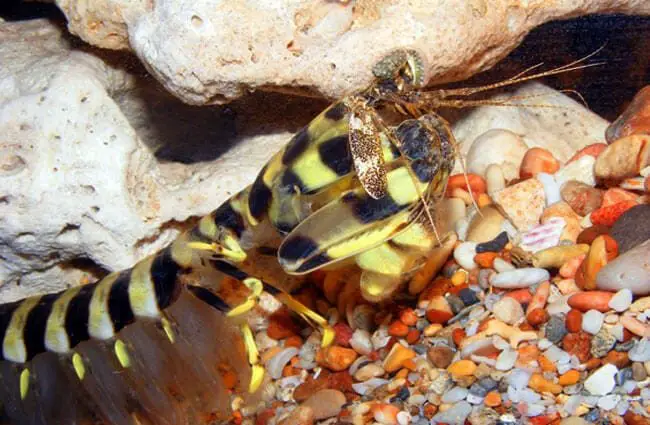
Finding Mantis Shrimp in the Wild
For avid divers and snorkelers, encountering a mantis shrimp in its natural habitat is a thrilling experience. They are most commonly found in coral reefs, rocky areas, and sandy bottoms in tropical and subtropical waters. Look for their burrows in the substrate—these are often visible as small holes or mounds. Be cautious when approaching their burrows, as they are fiercely territorial and will readily defend their homes. Remember to observe them from a safe distance and avoid disturbing their habitat.
Caring for Mantis Shrimp in Captivity
Keeping mantis shrimp in captivity is challenging and requires specialized knowledge and equipment. They need a large tank with plenty of hiding places and stable water chemistry. They are aggressive predators and should not be housed with other invertebrates or small fish. Their diet should consist of a variety of live or frozen seafood, such as shrimp, crabs, and snails. Regular water changes and careful monitoring are essential to maintain their health and well-being. They require a significant commitment and are best left to experienced aquarists.
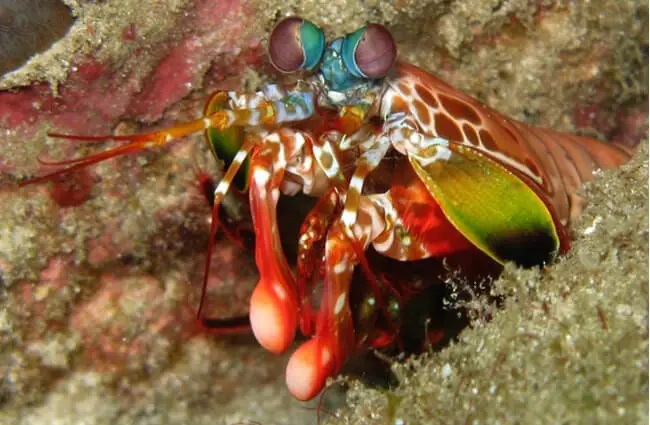
In conclusion, the mantis shrimp is a truly remarkable creature. A testament to the incredible diversity and complexity of life in the ocean. From their powerful appendages and extraordinary eyesight to their unique reproductive strategies and ecological role, these fascinating predators continue to captivate scientists and nature enthusiasts alike. Their ongoing study promises to unlock further insights into the wonders of the marine world and inspire innovations in materials science and technology.





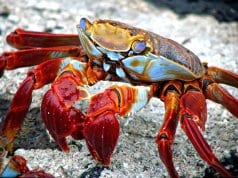
![Red Angus Closeup of a beautiful Red Angus cowPhoto by: U.S. Department of Agriculture [pubic domain]https://creativecommons.org/licenses/by/2.0/](https://animals.net/wp-content/uploads/2020/03/Red-Angus-4-100x75.jpg)

